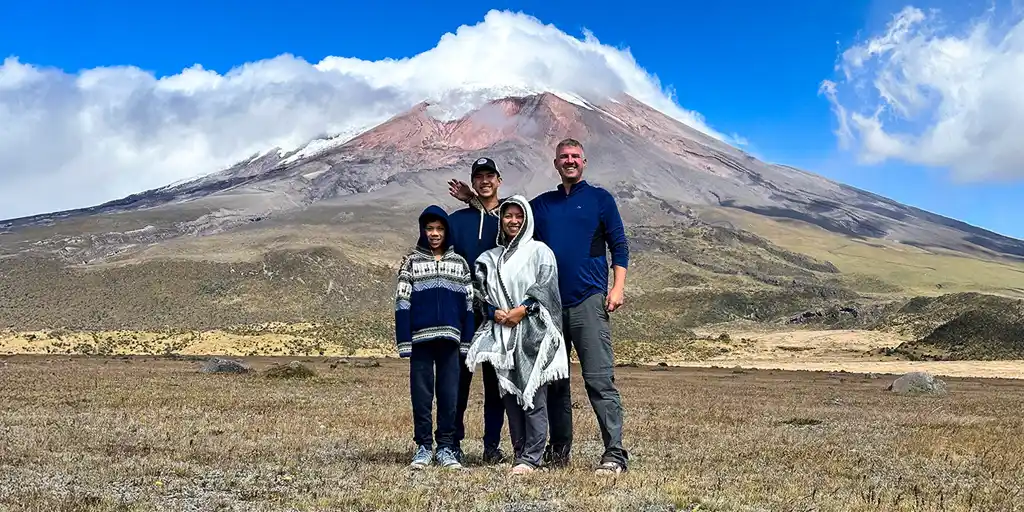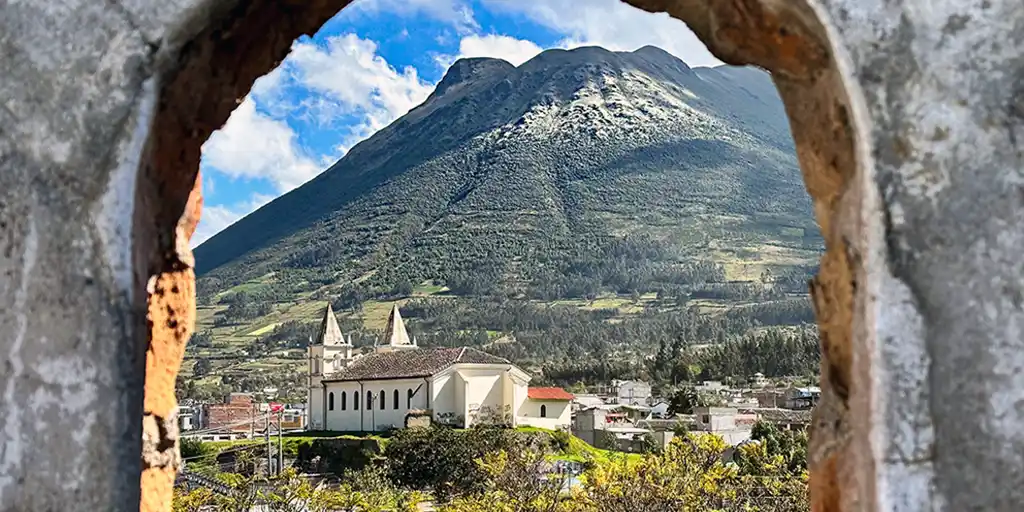Looking for epic family travel in Ecuador? Our guide to visiting Cotopaxi National Park with kids covers hikes, wild horses, and high-altitude adventures that will inspire your next trip to the Andes.
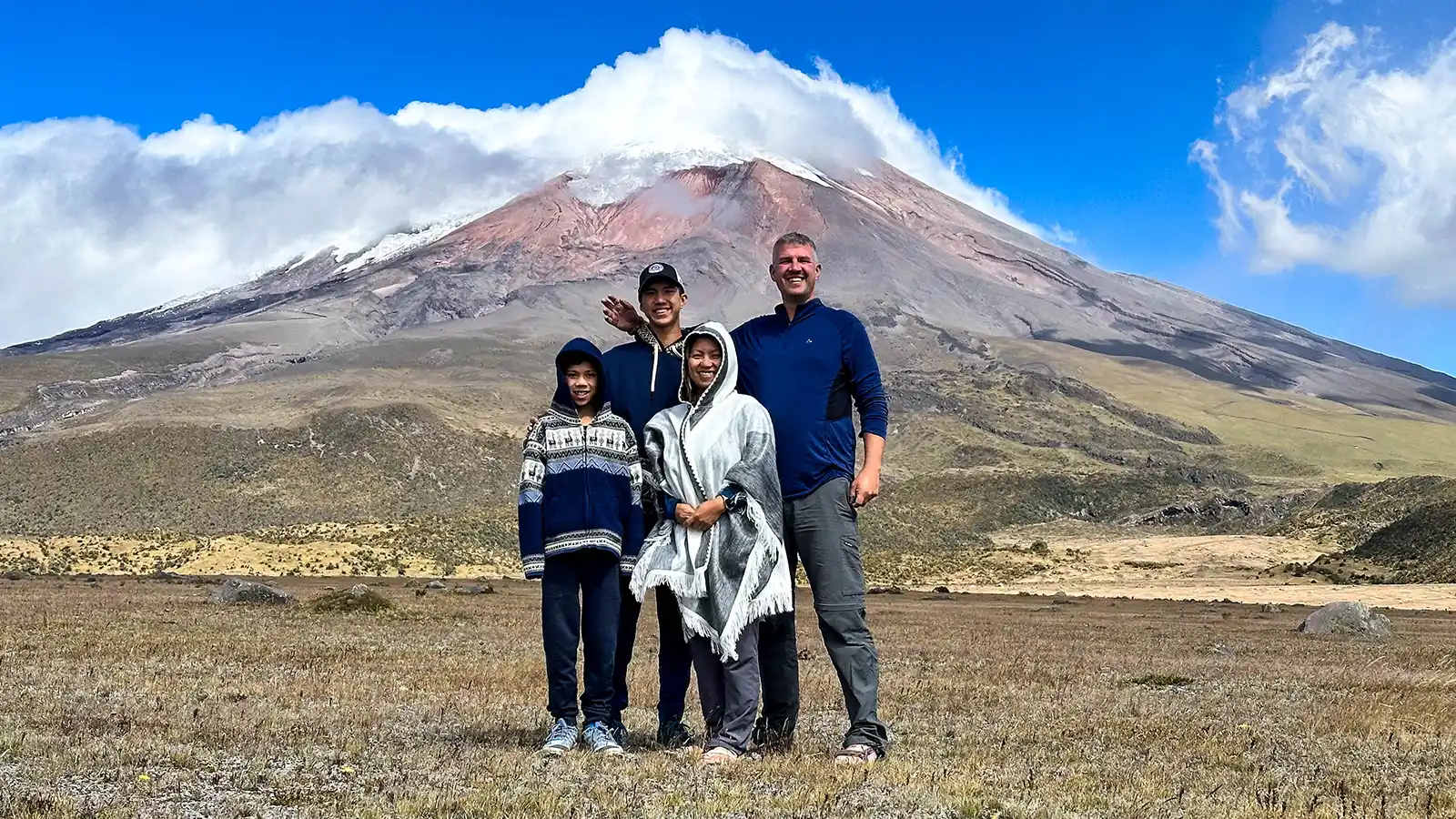
I was hiking in Peru recently, scouting a remote trail as one of a handful of outsiders welcomed to test out a new section of the Royal Inca Trail high up in the Andes Mountains. It wasn’t exactly a family-friendly stretch of trail (yet, but it will be in a few years), so I haven’t written about it here. On the trail with me was my friend Mariyana, an avid mountain climber and adventurer, who runs a company called YOLO Dream Adventure Travel out of Alabama.
As we chatted, I mentioned that I would be traveling to Ecuador in a few months with my family. Her eyes lit up. “Will you be going to Cotopaxi?” she asked.
“Yep, we’ll be spending the night there,” I replied.
“That is the most beautiful summit that I’ve ever stood on,” she replied, staring dreamily up at the sky, as if she had transported her soul across the South American continent.
It wasn’t until dawn on day five of our Ecuador itinerary that I truly understood what she meant.
Visiting Cotopaxi National Park with Kids
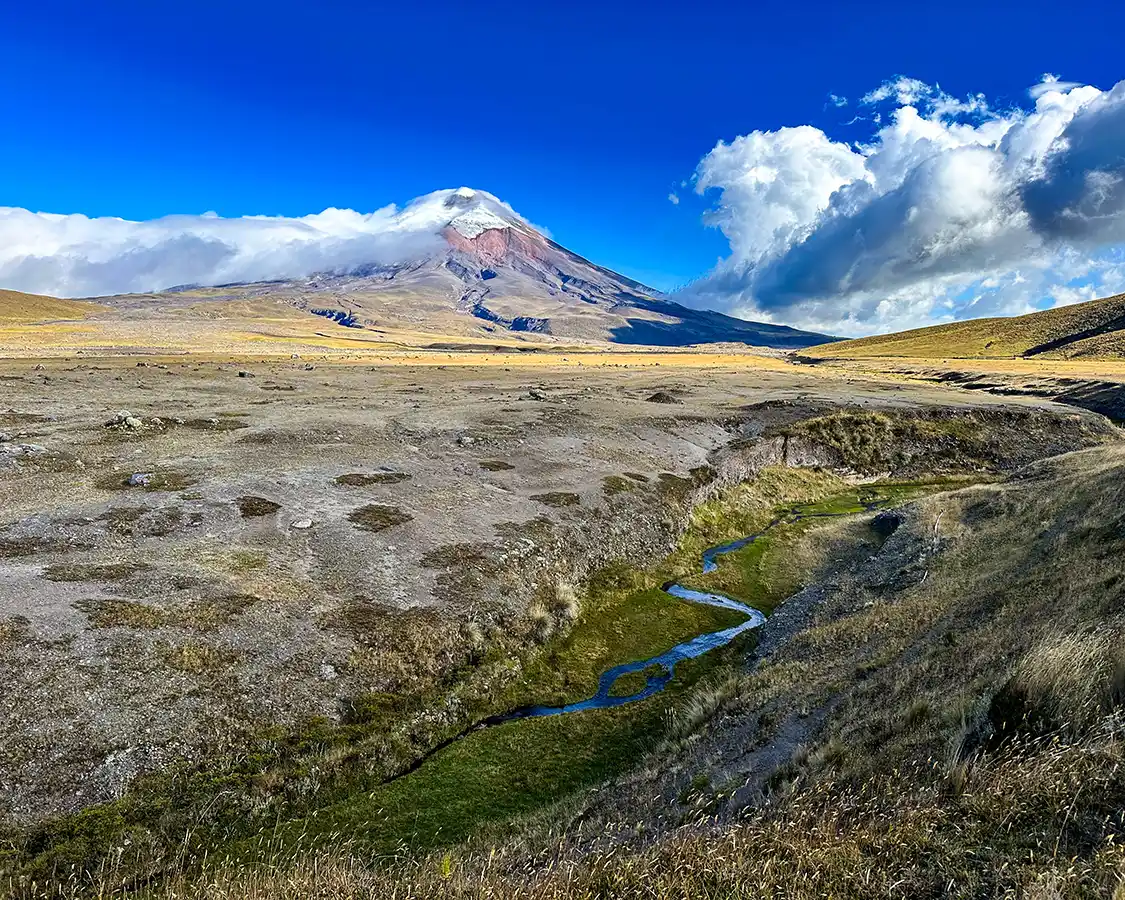
After spending a few days exploring the capital of Quito and wandering the local markets of Otavalo, we drove south through the valley of the Volcanoes to Cotopaxi National Park. Now, we only had about 24 hours to explore the park before heading to Quilotoa and on to the Galapagos Islands. With that kind of time constraint, there was no way that we would have the chance to reach the summit of Cotopaxi Volcano.
As it turns out, though, there are more than enough things to do in Cotopaxi National Park to fill in that time. And we were determined to experience this park to the max.
Christina, the boys (Cohen, 12, and Dylan, 10), and I set up a home base at Tambopaxi Lodge, the only accommodation outside of camping within Cotopaxi National Park, and set out on 24 hours of hiking, exploring, horseback riding, and visiting Cotopaxi National Park’s famous wild horses.
It was awesome.
About Cotopaxi National Park
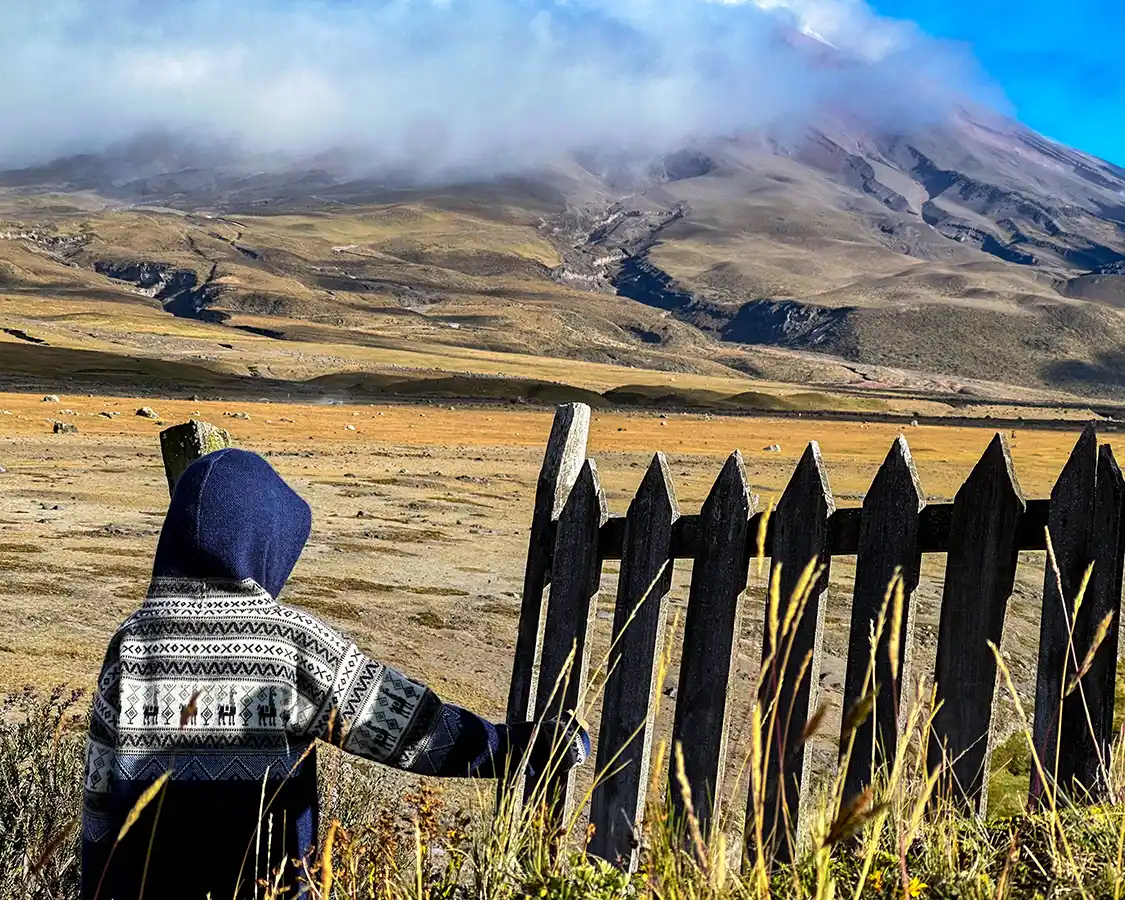
Cotopaxi Volcano rises from the Ecuadorian Andes like a beacon. Its gleaming, glacier-topped summit scrapes the skies, while at its feet, wild horses spring across open páramo without a care in the world. The air within Cotopaxi National Park is thin. The base of its storied volcano sits at 3,720 meters (12,200 feet), while the summit soars up to 5,897 meters (19,347 feet). But it’s the views, rather than the altitude, that took my breath away.
Cotopaxi Volcano is one of the world’s tallest active volcanoes. Its near-perfect cone has been an ever-present fixture in the Andean landscape, looming over Incan rituals, Spanish explorers, and confounding mountaineering legends. It’s also considered by many to be among the most beautiful volcanoes on Earth.
For adventure-loving families like mine, Cotopaxi is the type of place that rewires your sense of adventure. Set against a backdrop of one of the most iconic mountains in South America, you can ride horses through grass-covered valleys, cycle through high-altitude plains where condors patrol the skies, or hike trails through fields of lava rocks. This Ecuadorian National Park balances raw wilderness with just enough accessibility to allow most families to explore the park with relative ease.
Things To Do In Cotopaxi National Park for Families
Most tour operators offering summit climbs of Cotopaxi Volcano won’t accept anyone under the age of 16. With that knowledge in hand, we knew that recreating my friend’s wonder of standing on the gleaming glaciers at the volcano’s peak wasn’t going to happen for us. But even without climbing to the top, we still packed our visit to Cotopaxi National Park with a wealth of adventure.
Stay At Tambopaxi Lodge
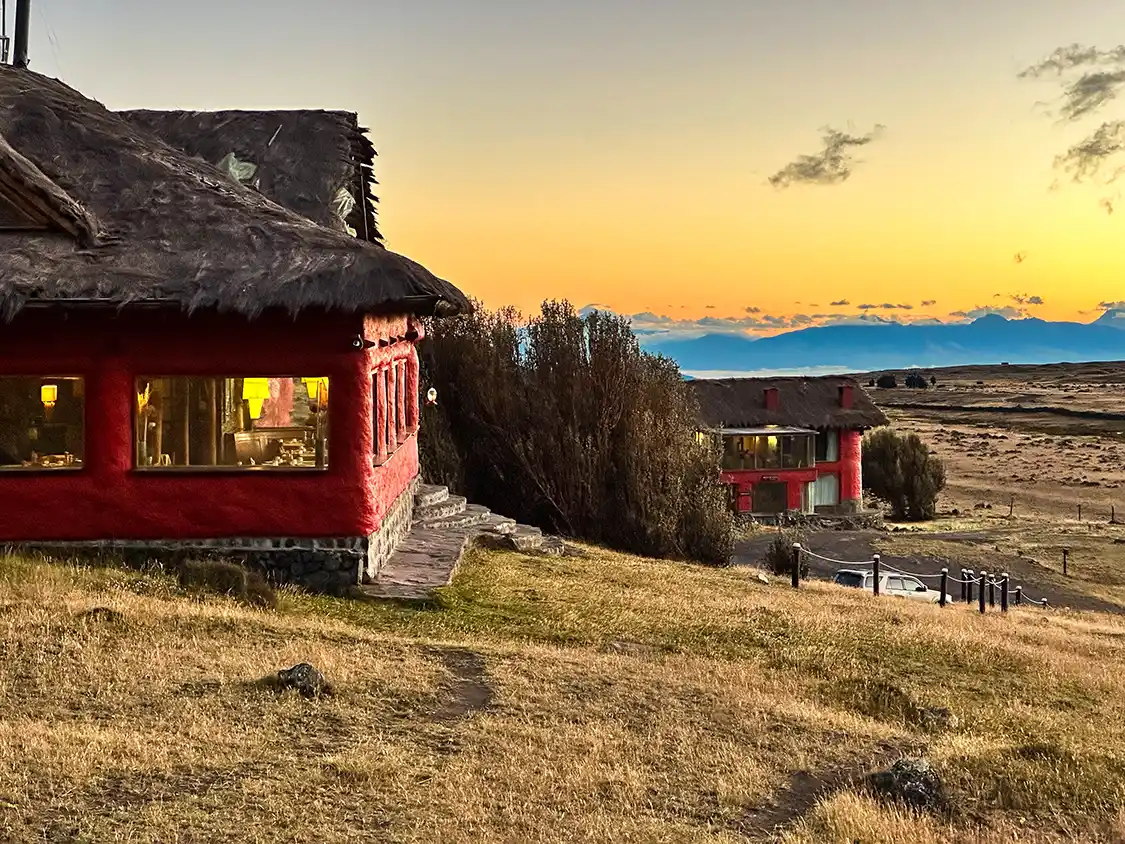
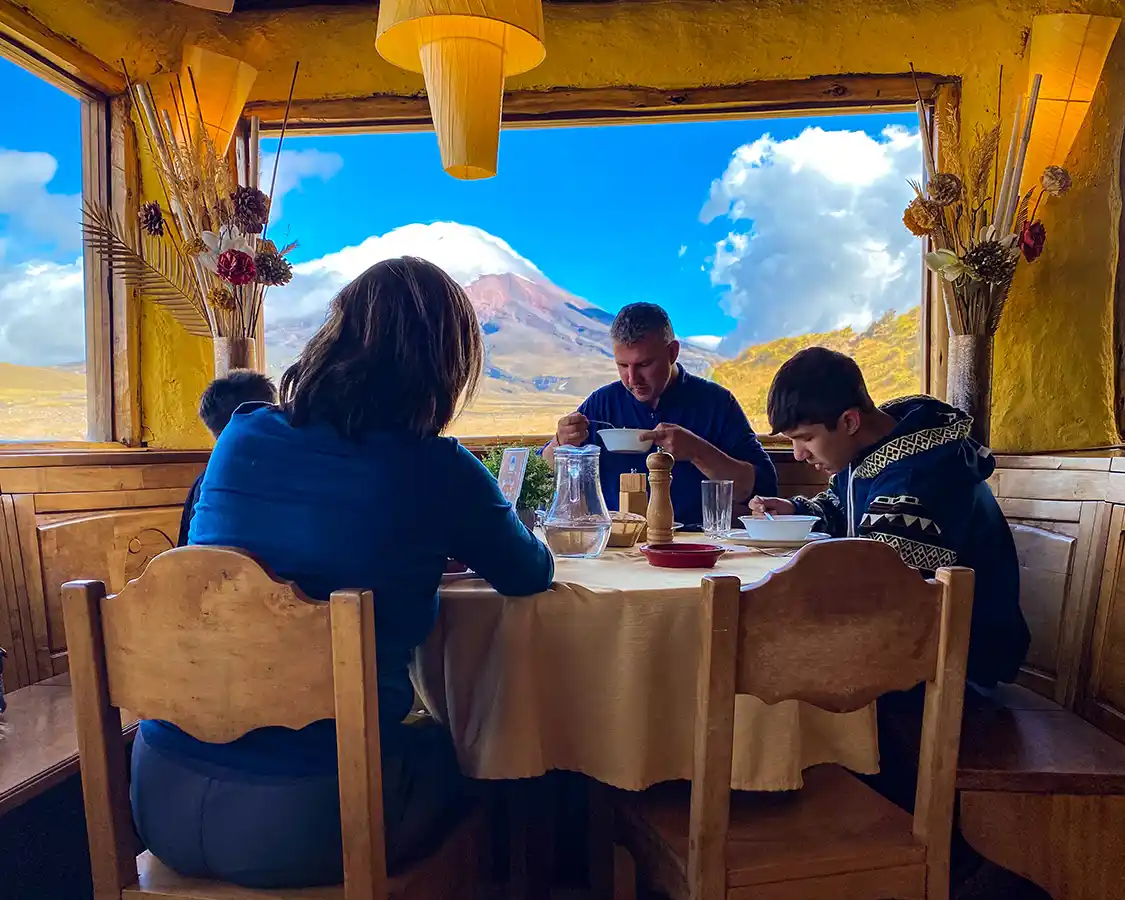
Driving into Cotopaxi National Park, it was impossible not to notice Tambopaxi Lodge. This is the only accommodation within the park, and its red adobe facade and thatch roof help it to stand out in stark contrast to the surrounding Andean landscape.
The rooms at Tambopaxi are simple and straightforward. There are 10 rooms in the hotel, including four standard rooms in the main building and six first-class rooms in the annex. As a family of four traveling in Cotopaxi National Park, the first-class rooms were what we needed. One queen-sized bed for Christina and me, and a bunk bed for the boys.
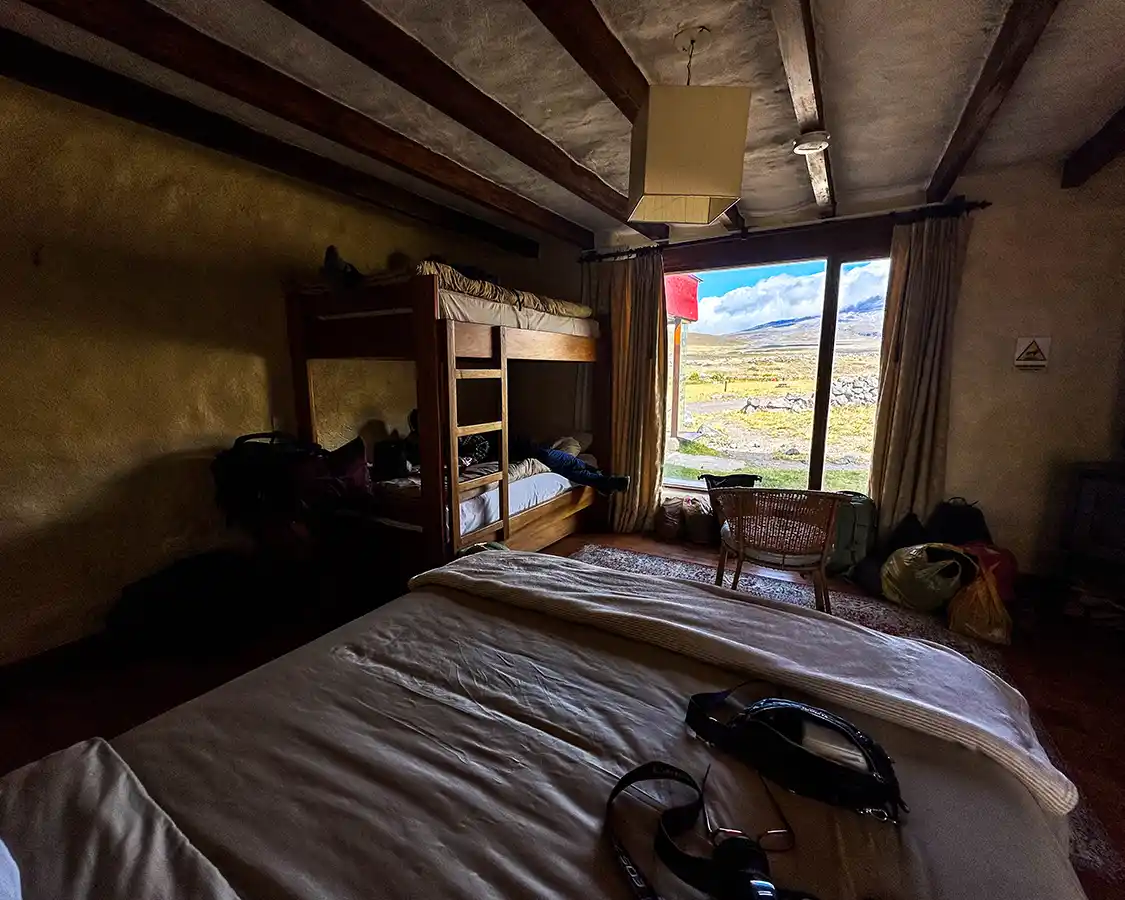
But there’s another reason to upgrade to the first-class rooms at Tambopaxi, and that is the view.
This park sits just south of the equator, so the sun goes down fairly early, with an almost even split between day and night. But those night views of Cotopaxi Volcano under a blanket of stars are framed up perfectly from many of the rooms in the Tambopaxi annex.
In the main building, the Tambopaxi Lodge Restaurant serves up traditional Ecuadorian comfort food that helps to take the edge off the chilly nights and thin air. This is the only restaurant within Cotopaxi National Park, and they do a great job. Hearty soups, delicious fish, and alpaca steaks were all delicious. They also have a decent beer and wine menu. Just remember that the alcohol hits a little harder at this elevation.
If you’re interested in staying at Tambopaxi lodge, you can check out their current rates and availability here.
Horseback Riding Across the Páramo
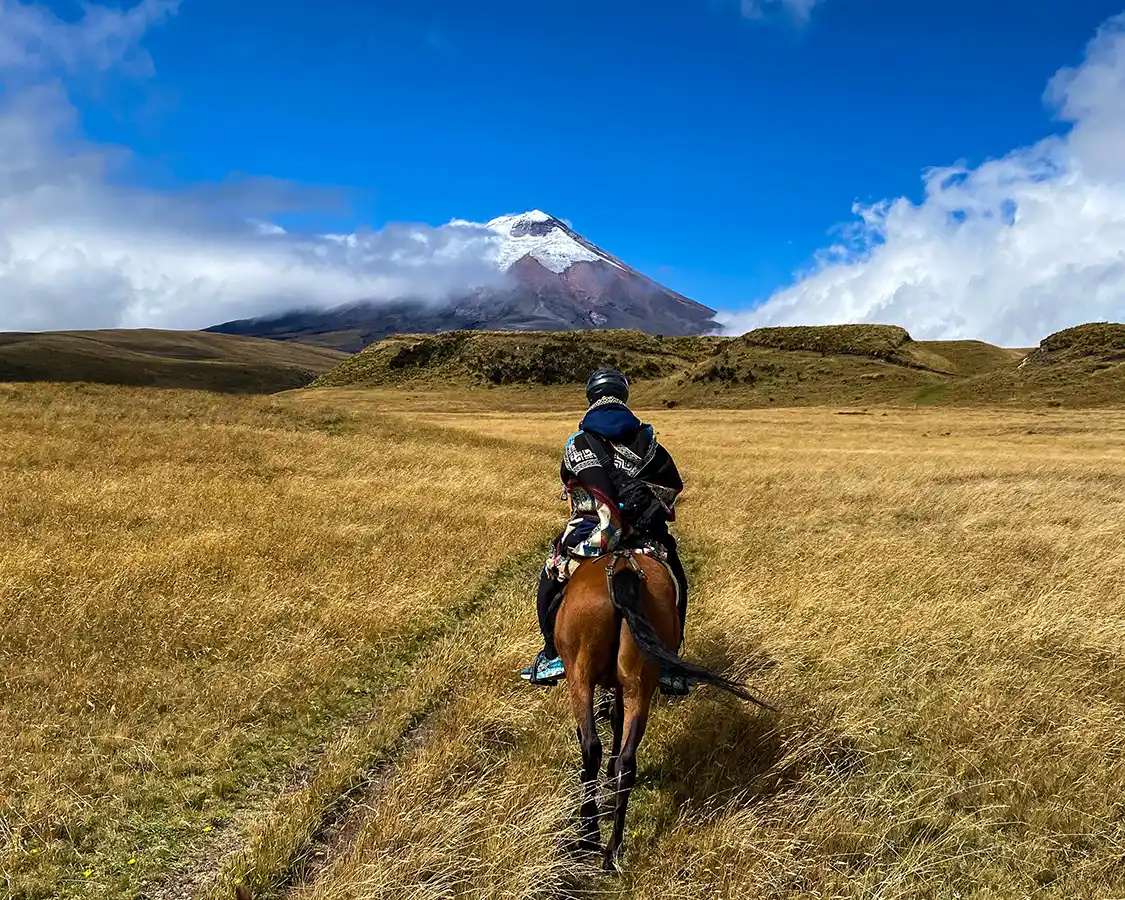
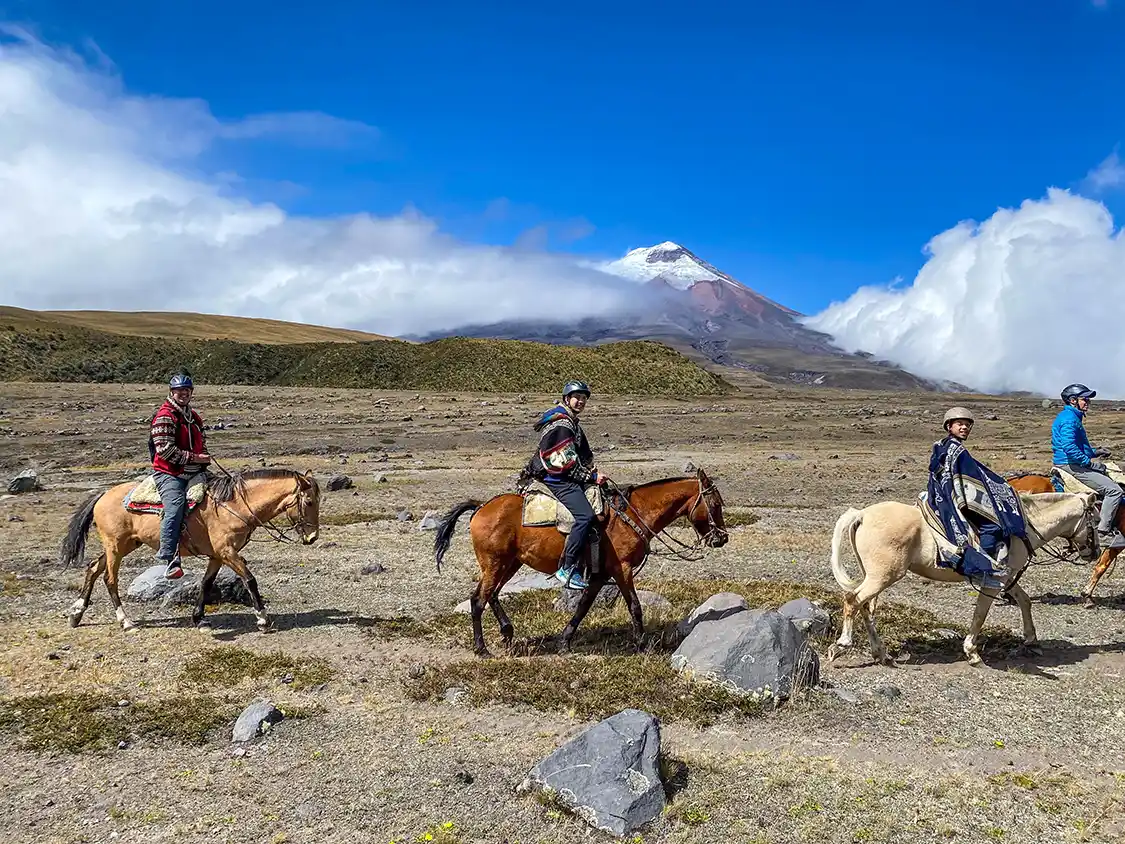
Trotting through the high-altitude grasslands of Cotopaxi National Park, while wild horses galloped in the distance. That wasn’t some dream; that was my family’s reality on our second day in the park. Christina and I were up long before dawn to catch the stars and sun rise behind Cotopaxi volcano. But even that early morning couldn’t dampen our feeling of excitement about horseback riding under the towering landscape.
Outfitters in the park set up shop a short distance from Tambopaxi Lodge. We had sent our heights and weights ahead of time so that we could be paired with horses that matched our body types. We were given traditional Ecuadorian ponchos to wear, and then we set off across the grassy valleys.
This was not a heavily guided tour. We left as a group, but were largely left to ourselves without a lot of horse-wrangling from the guides. They were loose with the rules, but not inattentive. Any time there was an issue, the guides were on top of it in a heartbeat.
We spent about three hours circling small calderas and prancing beneath the majesty of Cotopaxi. We sang, laughed, and just enjoyed the quiet peace that comes with a classic adventure. No technology (except for my camera), and views that were as humbling as they were beautiful. This may have been our favorite of all of the things we got to do in Cotopaxi National Park.
Cohen, who has been riding horses since his trek through the Petra Mountains while we were in Jordan, was in heaven. For Dylan, this marked one of the first times that he’s ever been the sole rider. He loved every second of it.
Visit The Wild Horses of Cotopaxi National Park
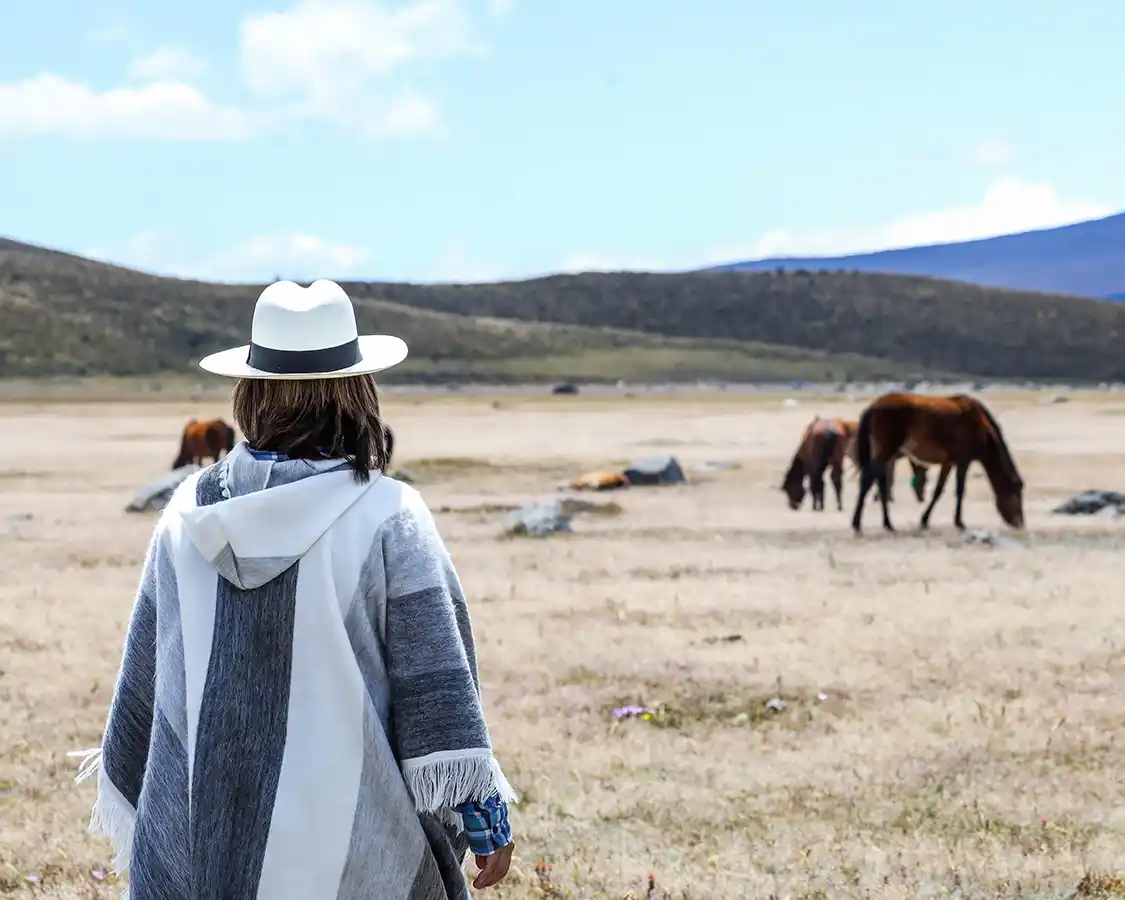
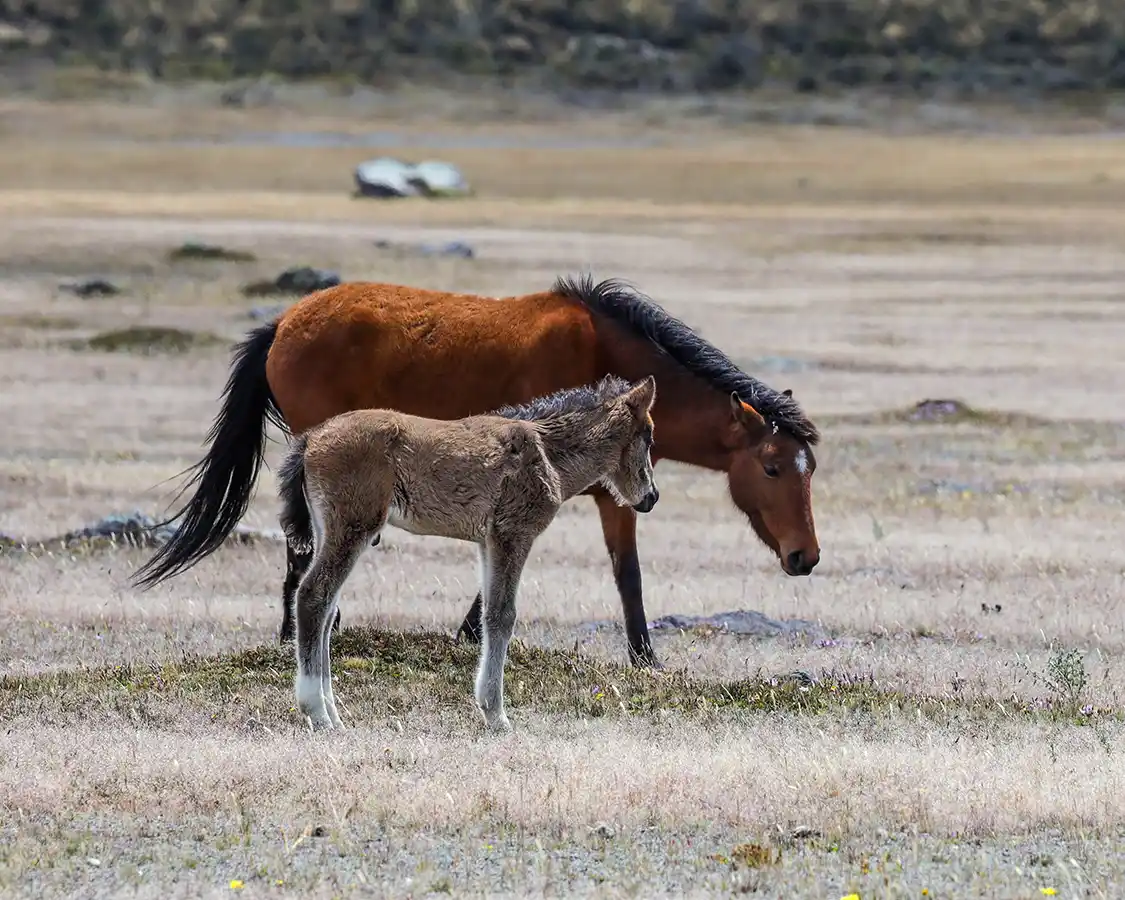
Inspired by our horseback trek beneath Cotopaxi Volcano, we set out on a mission to find the wild horses of Cotopaxi National Park. About 200 of these “párameros,” as they’re locally known, live within the park. The horses are descended from wild horses that roam in herds descended from Spanish stock brought centuries ago during the takeover of the Americas.
Today, they play an important role in the park’s fragile ecosystem, grazing the grasslands while embodying the raw, untamed character of Ecuador’s Andean highlands.
Spotting them isn’t always easy, as they roam freely throughout the park. But they can often be found near the base of the volcano near Limpiopungo Lagoon.
Bird Watching in the Limpiopungo Lagoon
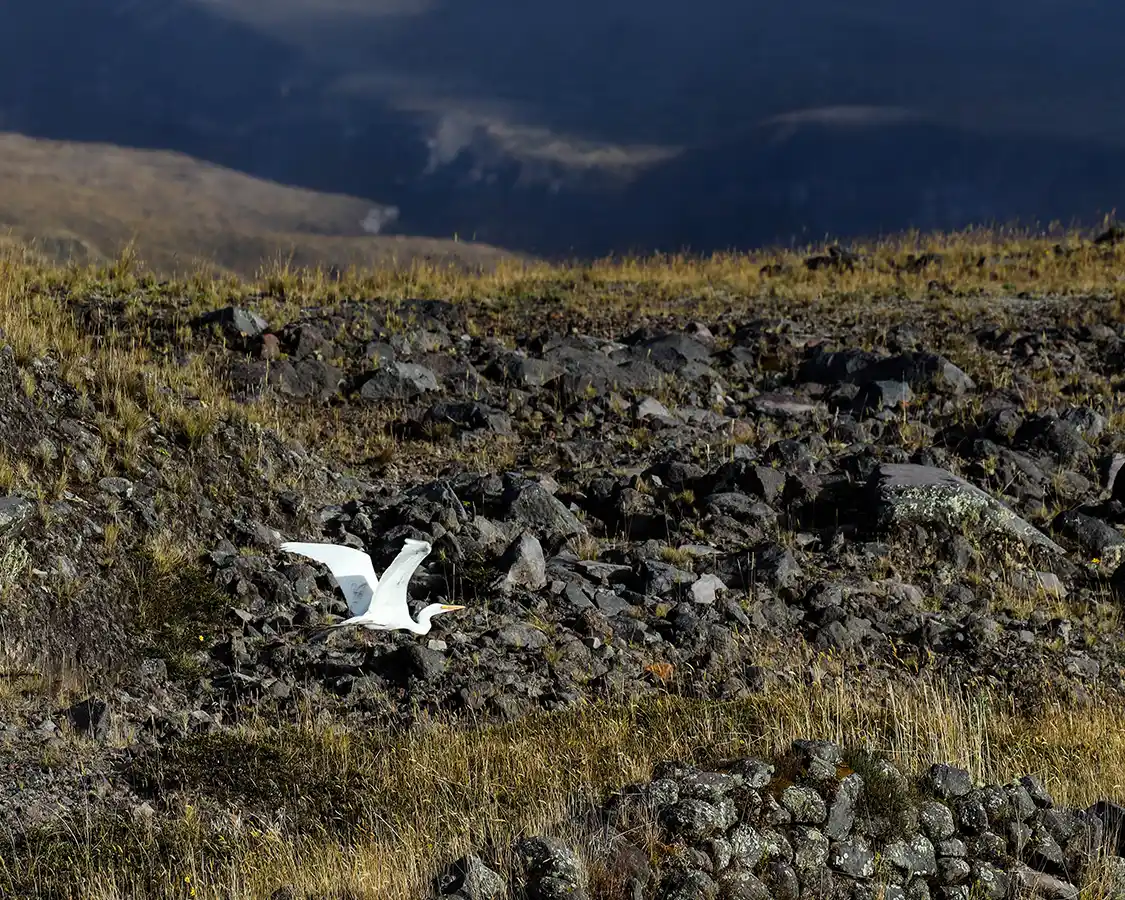
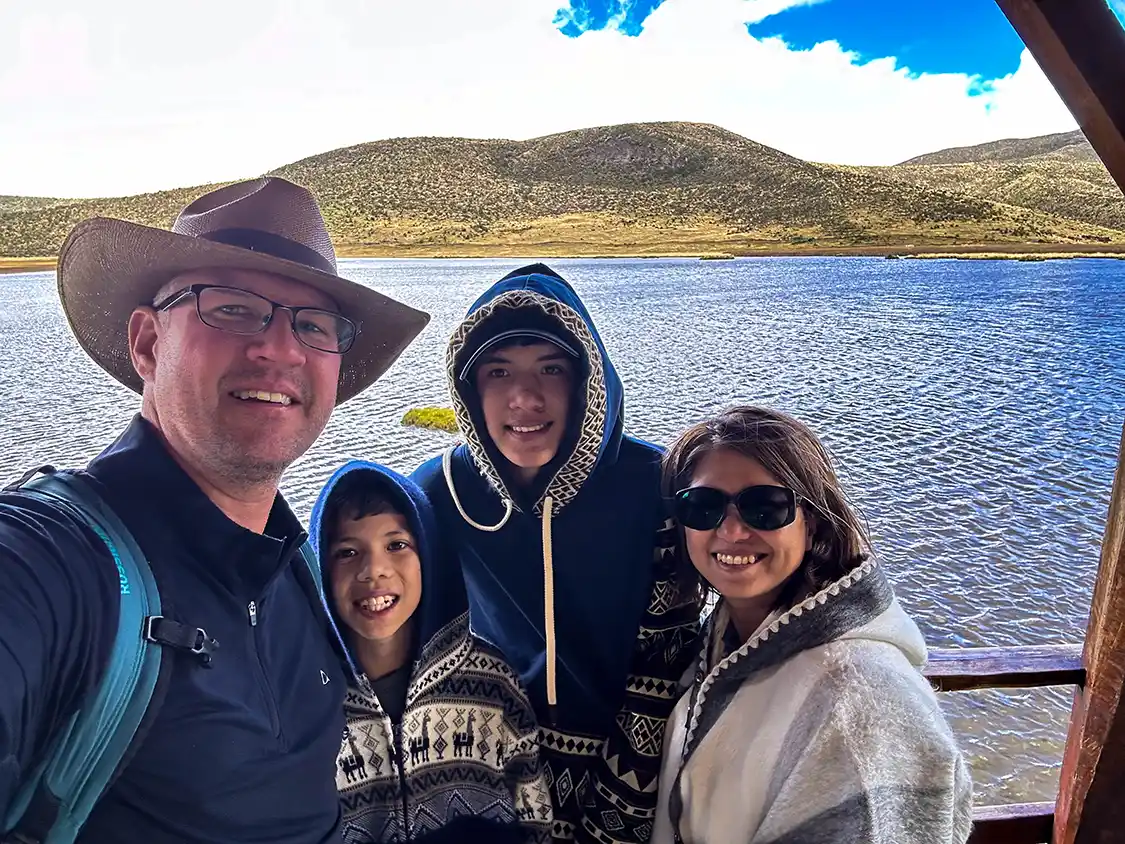
My family’s last stop on our Cotopaxi National Park itinerary was Limpiopungo Lagoon, a glacial lake that has become one of the park’s hotspots for viewing Cotopaxi’s abundant wildlife. If you visit in the morning or near sunset, the lagoon is often a gathering place for gulls, wild horses, and even the elusive Andean condors (similar to the ones that we saw in Colca Canyon in Peru).
We strolled around the lagoon, following a well-cared-for boardwalk with various viewing platforms where the towering Cotopaxi Volcano was reflected in the chilly waters of the lagoon.
Mountain Biking the Volcano’s Slopes
Now, Christina is not a cyclist. She doesn’t like it, and until a recent trip to Rouyn-Noranda in Quebec, she hadn’t ridden a bike for more than about 10 feet. The boys and I both love mountain biking, and we had plans to shred some mountain trails on our upcoming visit to Quilotoa here in Ecuador.
Long story short, mountain biking in Cotopaxi was not on our to-do list. But for families that want to squeeze some adrenaline out of their pedals, older kids or teens accompanied by an adult can rent bikes and descend from the José Rivas Refuge down to the Cotopaxi National Park entrance.
The ride looks epic, transitioning from volcanic scree to rolling grasslands while condors and horses roam across the trails.
Hike to the José Rivas Refuge
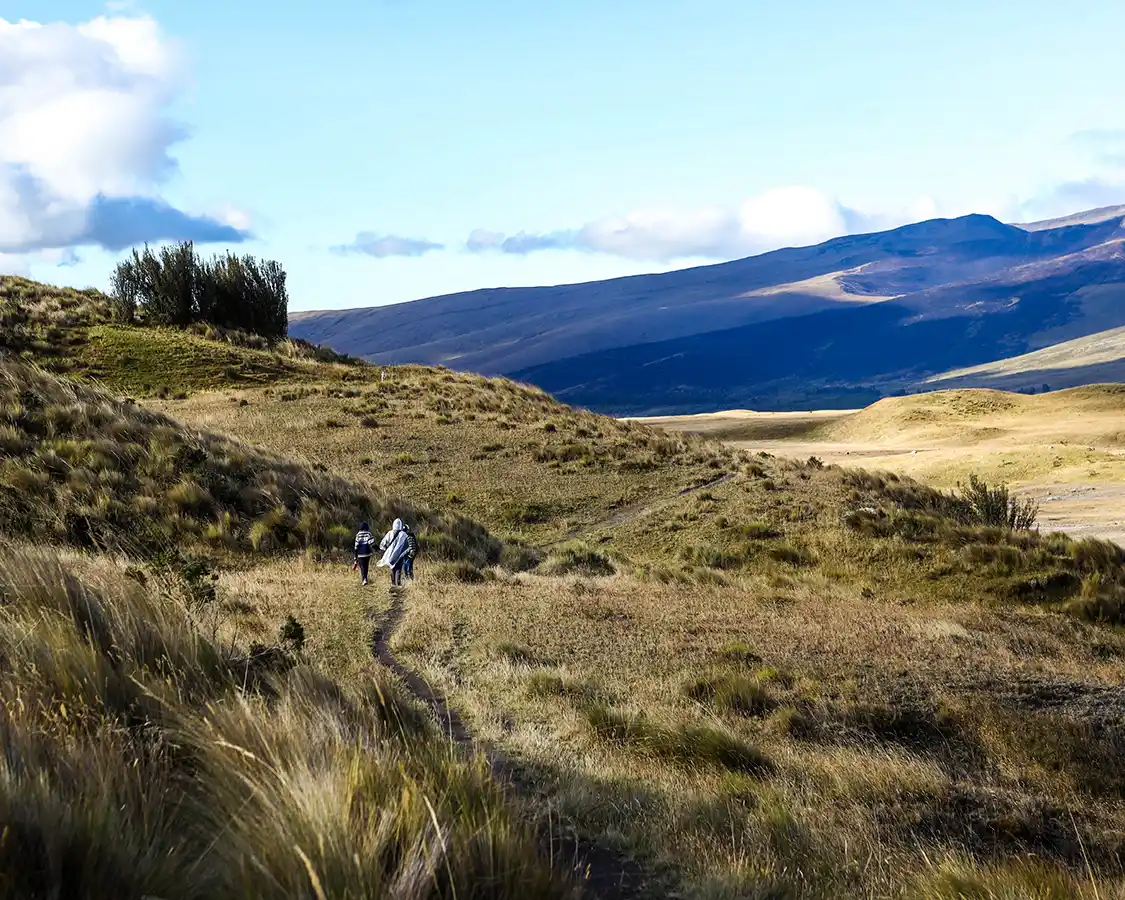
For those unable to summit Cotopaxi Volcano, one of the top things to do in Cotopaxi National Park is a hike to the José Rivas Refuge, the basecamp for those pushing to the volcano’s peak. The trail to Cotopaxi’s base camp, which sits at about 4,800 meters, isn’t technical, but the altitude can make it challenging.
Kids will feel like mountaineers as they crunch along the volcanic gravel and squint their eyes as the sun gleams off the bright ice of the Cotopaxi glacier. Just make sure to pace yourself so you don’t burn out. Take your time and bring some hot chocolate to make at the refuge as a reward.
Camping Under the Stars at High Altitude
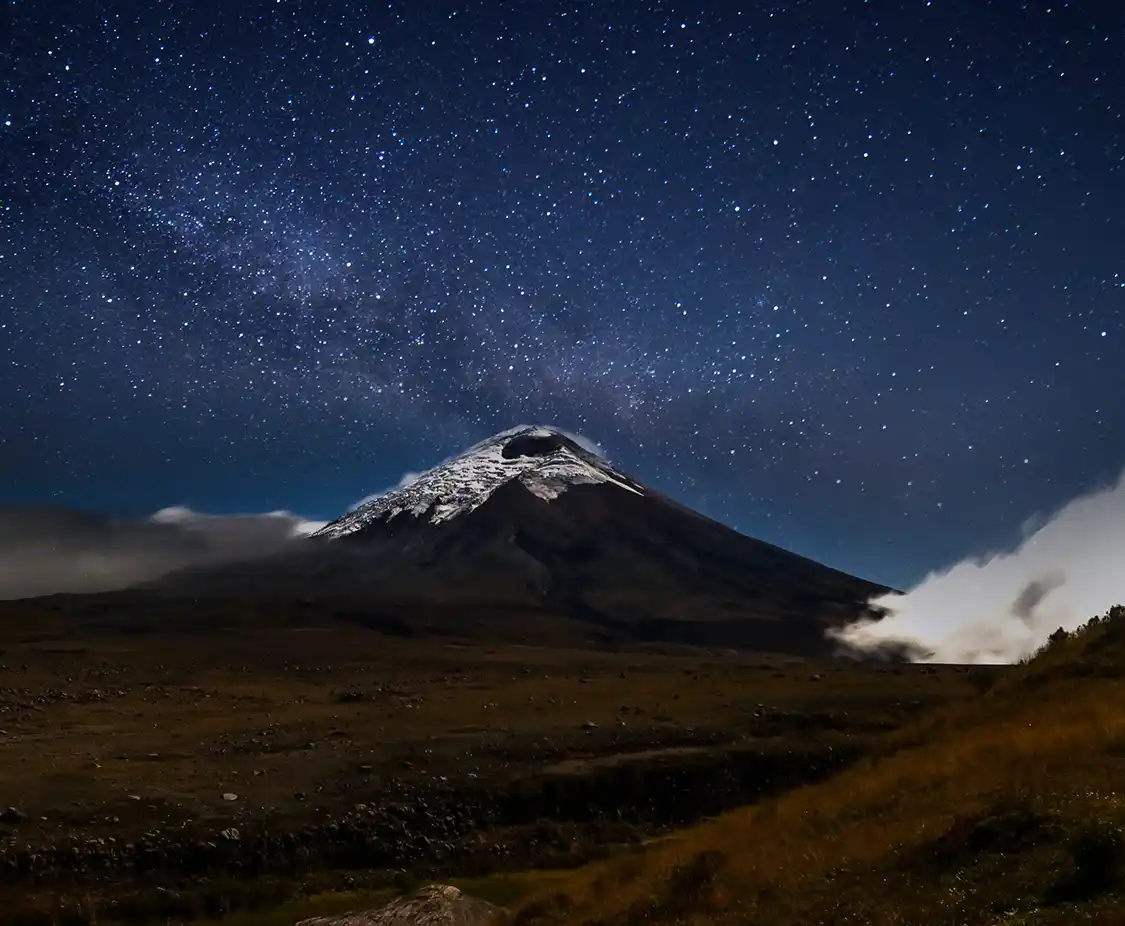
Few family experiences rival pitching a tent at 3,600 meters with Cotopaxi’s snowcapped summit glowing in the moonlight. The skies here are ink-black, the Milky Way dazzling, and the cold enough to make that campfire feel legendary.
Camping in Cotopaxi National Park is a unique adventure for families, with designated campsites near Limpiopungo and Santo Domingo, plus options at nearby lodges like Tambopaxi and Hacienda El Porvenir. Entry costs are minimal, but the real challenge is the altitude and cold—be prepared with warm layers, a winter-rated sleeping bag, and sturdy, waterproof gear to make the experience safe and unforgettable. You can find my guide to family camping here for more information.
Tips for Visiting Cotopaxi National Park with Kids
Cotopaxi is big, epic, and beautiful. It’s also not a place to be taken for granted. This is a vast wild land set at a decent altitude, and if you’re traveling with kids, it’s important to respect not only the environment but also recognize your own (and your kids’) personal limitations. Here are a few tips for visiting Cotopaxi National Park that should help you plan your trip:
1. Take it Easy and Respect the Altitude
Don’t expect to power through Cotopaxi. The air thins fast at 3,000 – 4,800 m, so move at your kids’ pace, take frequent rest breaks, and keep an eye out for signs of altitude trouble such as headache, nausea, and fatigue.
2. Dress in Layers
Weather in the high Andes can flip in minutes. During our visit, we went from t-shirts and shorts to sweaters, toques, and blankets. Bring base layers, fleece or down, wind/rain shells, hats, gloves, and extra socks. Be ready to shed—or pile on—gear depending on the weather.
3. Plan Your Hikes Head of Time
If summiting the refuge seems ambitious with younger kids, aim for the parking-lot approach or the Refugio trail (about a 45-minute stretch) instead. Even those shorter walks offer sweeping views of the national park, snow play, and a sense of accomplishment without burning out small legs.
4. Pack Food, Snacks, and Warm Drinks
Bring a thermos of hot soup, tea, or cocoa, plenty of water, and high-energy snack bars. The refuge may offer simple options, but access is limited.
5. Know When To Turn Back
Pushing through a high-altitude hike when kids (or adults) are struggling rarely ends well. If the wind, cold, or altitude gets to be too much, re-assess your goals. The view and experience are still amazing even if you don’t reach your initial target.
Family-Friendly Tours In Cotopaxi National Park
🚶 Explore Cotopaxi: Top Family-Friendly Tours
Ready for an epic family adventure in the Andean highlands? These curated tours help your family explore Cotopaxi National Park with ease and confidence.
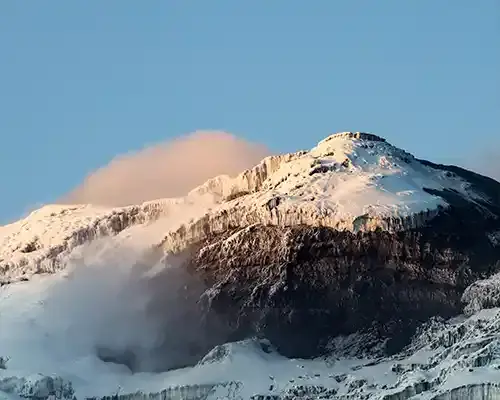
🏔️ Cotopaxi Volcano Full-Day Tour (from Quito)
Explore Cotopaxi National Park with a guide, hike to Limpiopungo Lagoon, and take in volcanic landscapes.
Book on Viator →
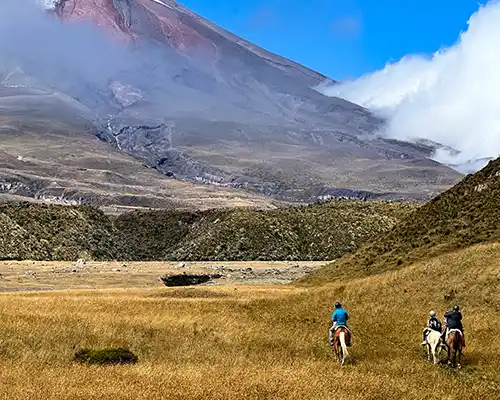
👨👩👦 Family-Friendly Cotopaxi and Banos tour with pickup from Quito. Includes the “Swing at the Edge of the World.”
A day designed for families: gentle hikes, wildlife encounters, and accessible experiences around Banos and Cotopaxi Volcano.
Book on GetYourGuide →
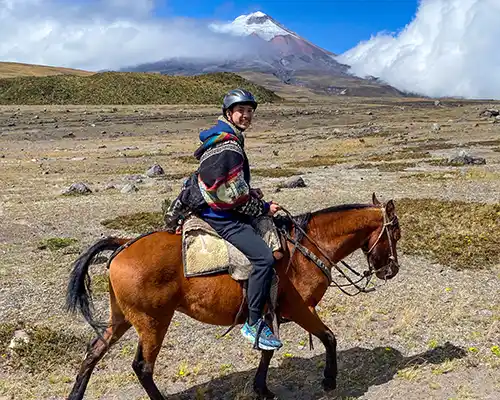
🐎 Horseback Riding in the Páramo
Ride across the high-Andean plains beneath Cotopaxi Volcano. Perfect for adventurous families with kids 8+.
Book on Get Your Guide →
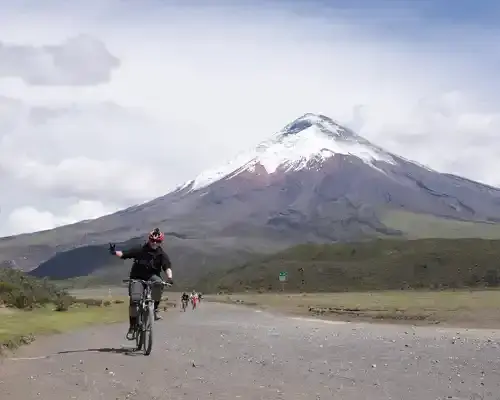
🥾 Cotopaxi Day Hike & Limpiopungo Lagoon
Enjoy a guided trek and mountain biking through páramo landscapes and around the stunning Limpiopungo Lagoon with views of Cotopaxi.
Book on Viator →
*These are affiliate links. We may earn a small commission at no extra cost to you — thank you for supporting our adventures!*
Family-Friendly Accommodations Near Cotopaxi National Park
Accommodations in Cotopaxi National Park are very limited. Tambopaxi is about the only option, unless you’re planning to go camping in the park. But, if you’re willing to travel a short distance, there are some great places to stay near Cotopaxi NP, and a number of them are excellent for families.
🏠 Family-Friendly Stays Near Cotopaxi
After a day exploring volcanoes and wild horses, your family deserves comfort with character. These hand-picked lodges near Cotopaxi National Park are bookable on Booking.com.
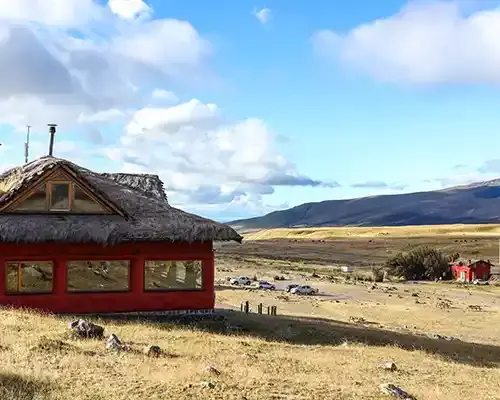
🌄 Tambopaxi Lodge (Inside the Park)
The only lodge inside Cotopaxi NP. Family rooms, hearty meals, and sunrise volcano views worth the altitude.
Check on Booking.com →
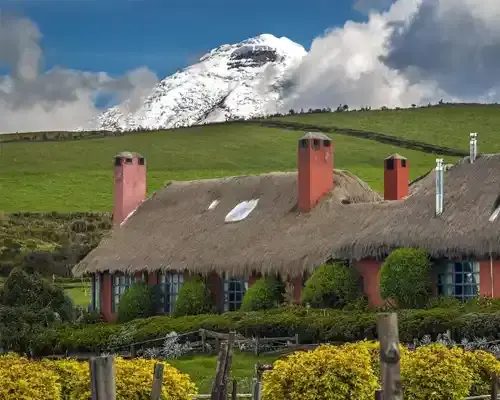
🏕️ Hacienda El Porvenir (Near the Park)
Rustic-chic hacienda just outside the gates. Family rooms, gardens, and fireplaces for cozy Andean nights.
Check on Booking.com →
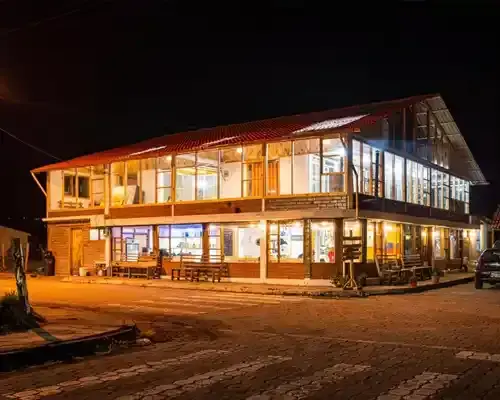
🏔️ Refugio Los Ilinizas Lodge
Trailhead-friendly location with spacious family rooms and plenty of outdoor space for kids to roam.
Check on Booking.com →
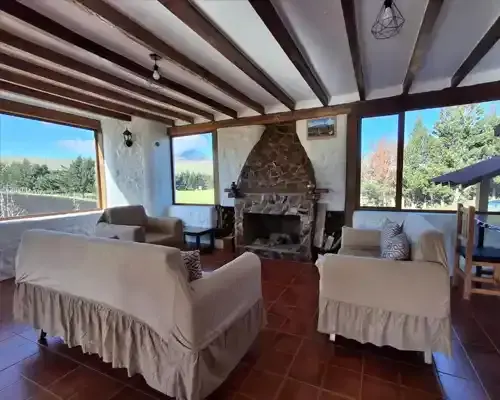
🌳 Cotopaxi Lodge
Hacienda-style stay with sweeping views, gardens, and family-friendly rooms — great value near Cotopaxi.
Check on Booking.com →
*These are affiliate links. We may earn a small commission at no extra cost to you — thank you for supporting our adventures!*
Cotopaxi Is A Place That Will Live Inside You Long After You Leave
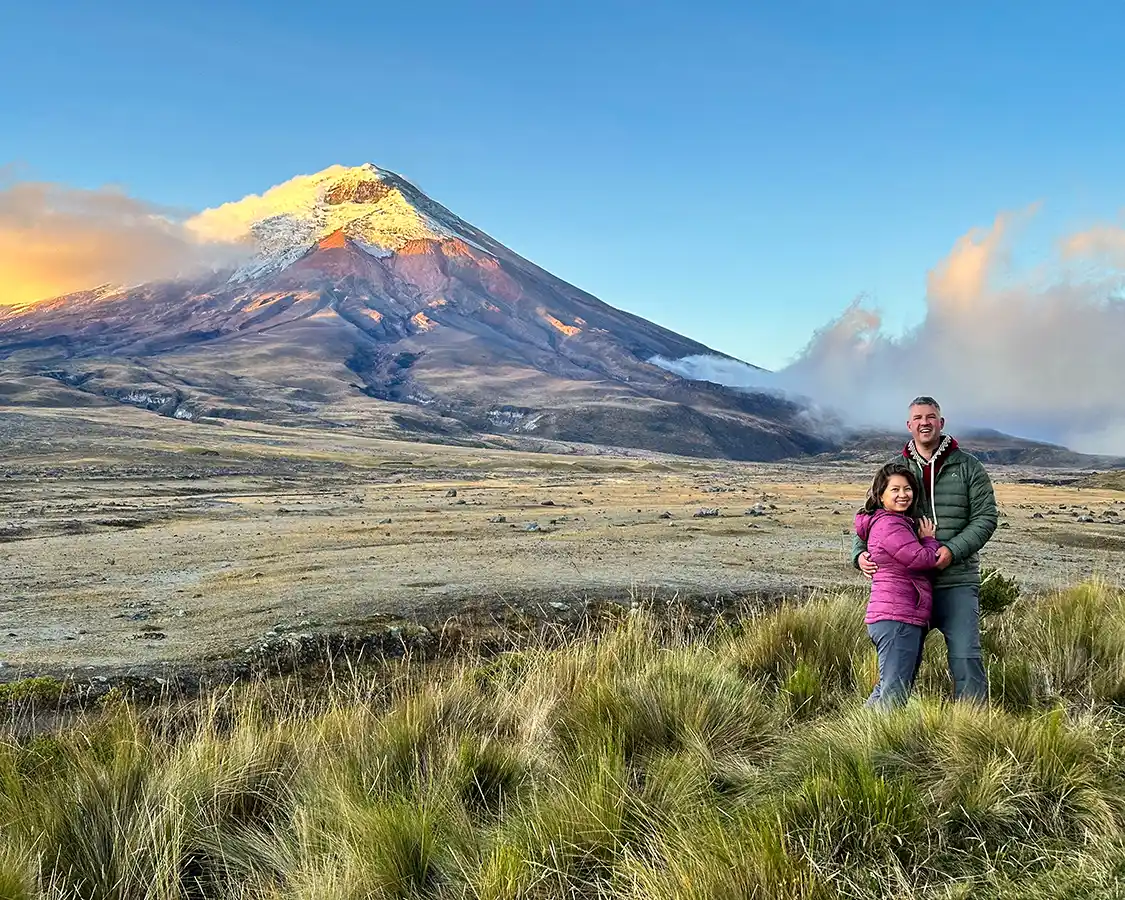
As I watched the sun crest over Cotopaxi’s glacier and spill gold across the páramo, I finally understood why Mariyana’s eyes lit up when she spoke of this place. We may not have stood on the summit as she once did, but in those 24 hours in Cotopaxi National Park—horseback riding through shadowed valleys, spotting wild horses, and breathing in the highland air with Christina, Cohen, and Dylan at my side—we found our own summit.
Visiting Cotopaxi National Park is far more than just conquering a peak; it’s about being humbled by nature’s paintbrush, together as a family, in one of the most unforgettable corners of the Andes.
If you’d like to dive a little deeper into Cotopaxi National Park and family travel in Ecuador, you can find more of my photos of Cotopaxi National Park here and you can check out our complete Ecuador family travel blog right here.
You May Also Like To Read:

